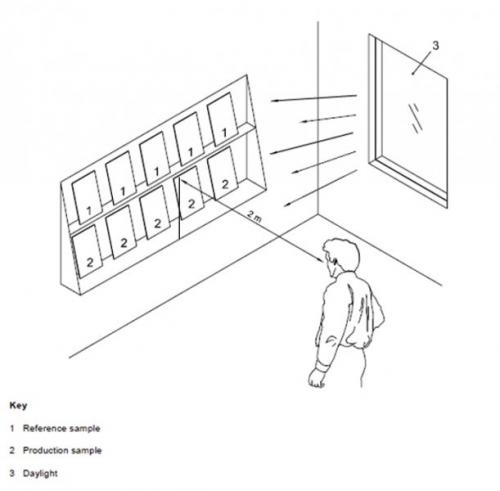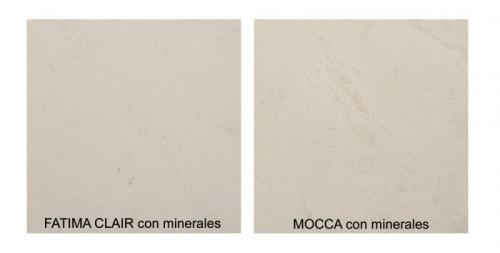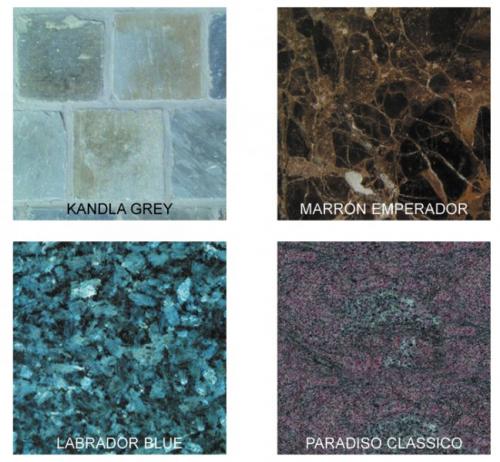By Geert Legein, Director Febenat (Belgium National Stone Association)
De gustibus et coloribus non disputandum est. A Latin proverb, know by many, and still forming the basis for discussions. Fact is you cannot really discuss colour and taste. Why is this still a subject leading to impossible discussions?
Choosing is part of being human
The thing that differs us from animals is that we have the ability to choose. An important factor in making choices is emotion. Regarding to taste, perception is what counts. We all perceive things differently. We all look at things in a different way. There are some personal factors which influence our decisions. The way we feel; our prejudice, background, culture, goal and even our gender. When some people linger about shoes, others do this about cars.
You cannot change the laws of physics. But we don’t have to. We can do something about the circumstances in which we have to make our choices. We’re not going to use marketing tools to sell products you don’t need. This doesn’t apply to natural stone. We all know the little tricks used in mega-stores. The sales towers packed with items you don’t need to distract the customer to make an impulse purchase. Positioning of products at eye level, changing setup regularly, appropriate music, the smell of freshly prepared food, etc…
It is imperative that natural stone is presented in its natural environment. Outdoor products should be show outdoors where they confront the elements. Indoor products should be presented in some kind of finished state. One of the most important criteria regarding natural stone, according to several European Standards, is that one has to look at natural stone in a dry state, no oblique light, at a distance of 2 meters and perpendicular to the surface. (see picture 1). This is a theoretical model which allows every natural stone can be compared under same conditions and circumstances.

Realistic view
This Standard just doesn’t apply anymore in several cases. Presenting natural stone in a finished model is much better. You avoid presenting natural stone in a sterile way. Looking at a sample isn’t the same as looking at natural stone as a whole. What you see is what you get in its finished state. Natural stone for flooring should be presented horizontally. Kitchen tops and bathroom sinks at hip height. Vertical parts like plinths or wall cladding vertically of course.
Nowadays, people should take in account the huge variety of finishing and diversity of products. Natural stone can be used almost everywhere when durability, beauty, serviceability and aesthetics matter.
One factor should be taken into account as well: the light source. The EU norm mentions normal daylight. This actually is fractured light, not direct sunlight and no artificial light. You can compare this light as light on a cloudy day. Artificial light is more representative indoors and sunlight outdoors. So more realistic. Not only light makes a natural stone look different, also the orientation in relation to the different light sources. So when the kitchen top and the back wall both are made of the same natural stone, they already look different because they are positioned under a different angle.

Displaying natural stone in a realistic way allows the customer to make an educated choice about his natural stone. This means taking into account the different characteristics and properties of every stone. When a stone is very heterogenic with a lot of colours and vanes, it is best displayed in all its glory. Do not forget one thing; natural stone is a living product, treat it as such.
Homogeneous vs Heterogeneous
Who doesn’t know the small samples of natural stone, in a small box, used by the representative of a company to pitch his products? We emphasize that this is not the way to sell natural stone. Even the most homogeneous stone will always vary in regards to this sample. Most stones contain concentrations of minerals. Some in few amounts, some in large amounts. So making your selection based on a small sample or even from a folder is not the way to proceed.
I would like to approach the difference between a homogeneous and heterogeneous stone from a different angle. It is not easy to clearly define and describe both materials. There are no scientific values which determine when something is homogeneous or heterogeneous. So it’s up to us to set the standard. A homogenic stone can be seen as a stone with one distinct colour. A heterogenic stone is the opposite. Every stone however hold minerals like mica, feldspath, and biotite. They give each stone its specific character. Even if there are a lot of minerals in a stone, it can still be homogeneous. When the minerals are evenly spread, the stone gives the impression of being homogeneous. When these same minerals are positioned differently, the stone will be seen as heterogeneous.
With speckled stones like Labrador and Paradiso, the one colour is clearly visible. It does have a variety of minerals. But because they are a part of the stone it is still a homogeneous stone. However, some people will see it as heterogenic. Judge it for yourself.

In some countries people choose natural stone because of its smooth character, so homogeneous. How a stone looks depends on the structure in the quarry and the choice in the quarry to organize a selection. When a quarry makes a selection people think that they have an option to get every stone according to their wishes. Nothing is more far from the truth. Selection is a marketing tool. Natural stone actually doesn’t need selection. But because of it, a quarry can sell f.i. light stones or dark stones separately. Or they can sell it as a mix. My personal opinion is that if you want natural stone for a project, you should tell it is natural stone. Natural stone is a noble product. You should show off with it. But it all comes down to taste. You cannot argue about taste. Whatever stone you pick, it will always be natural stone. With all the benefits of long life and durability.
Honest materials
Interior decorators call natural stone an honest product. It’s nature in all its beauty. What you see, is what you get. It is however subject to fashion. As long as the salespeople know what you want, you will be set for life.
